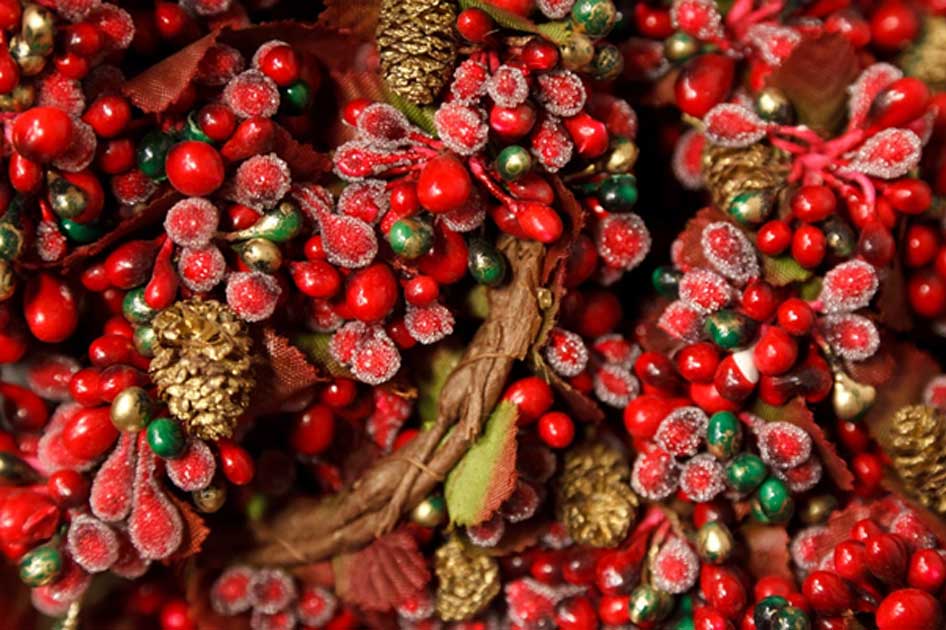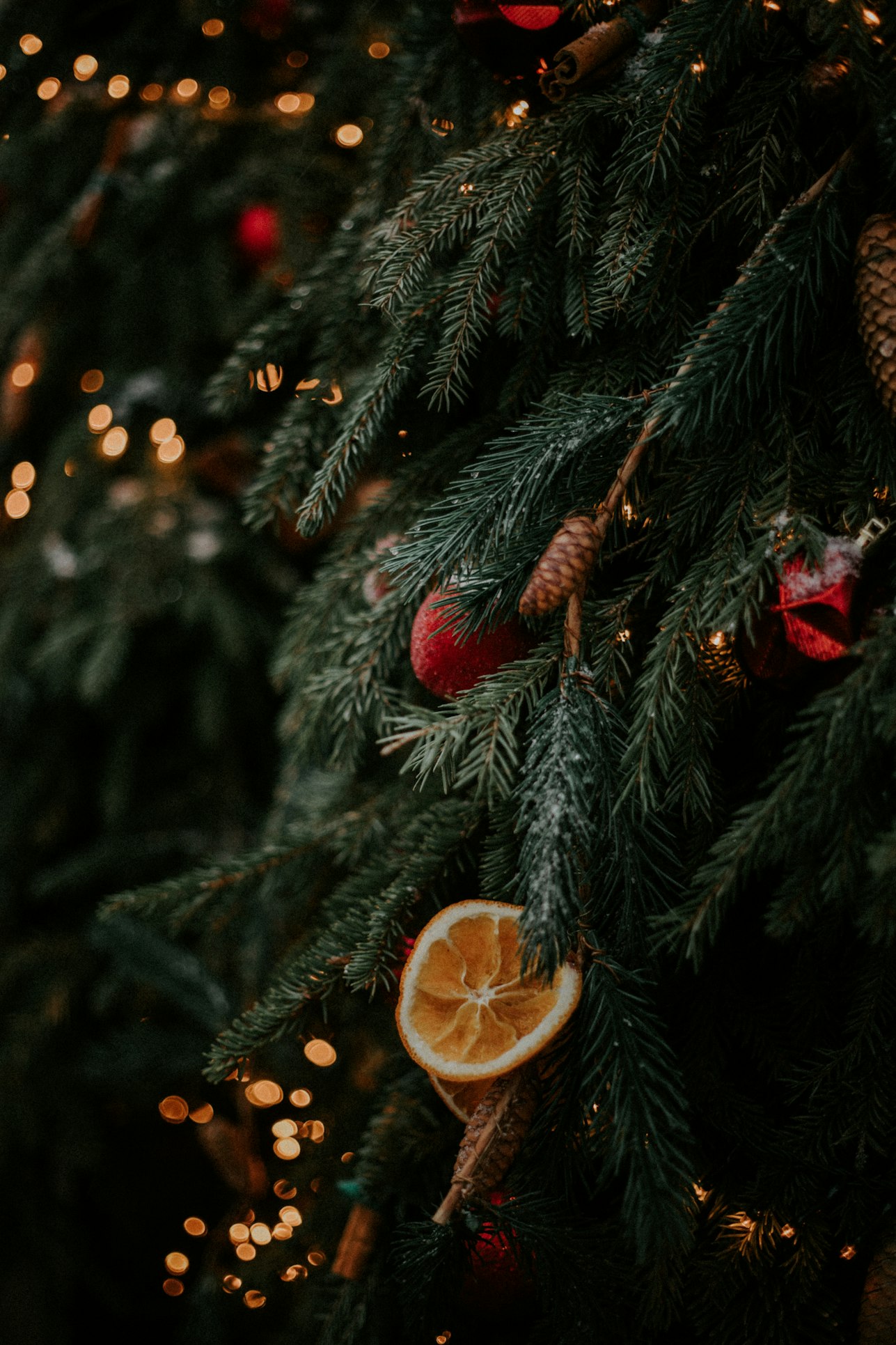
Posted on 12/23/2023 7:38:05 AM PST by Diana in Wisconsin

The Holly and the Ivy: How Pagan Practices Found Their Way into Christmas
Every year, almost without thinking about it, we incorporate certain plant species into out Christmas celebrations. The most obvious is the Christmas tree, linked historically in England to Prince Albert – but its use in British homes goes back to at least 1761 when Charlotte wife of George III put up a tree at the royal court.
(It’s probably worth noting here that the first artificial-brush Christmas tree was produced using the same machinery that was originally designed to produce toilet brushes.)
Three other plants are intimately associated with Christmas: holly, ivy and mistletoe – and in all cases their ecology is closely linked to their cultural uses.
Of all the trees that are in the wood
Holly, like ivy and mistletoe, is a winter green and the bringing of green vegetation into the home is closely linked to rebirth both of spring and of Christ. It is the holly that most closely bears the crown – its spiny leaves and red berries link to Jesus’ crown of thorns. But such a link does not explain why holly is linked to Christmas rather than Easter.
Holly was an important element in deer parks and old hunting estates – and the name holly still survives in modern place names such as Hollins, Holm Hodder, Hollyoaks and Hollywood – and were important for winter food. In the New Forest, in southern England, holly is still cut down as browse for the ponies.
The spiny dense canopy of holly also meant that it was useful as protection. It was sometimes planted next to saplings of valuable tree species to provide some protection from grazing animals and it is not unusual to see holly growing next to oaks and other trees, either from deliberate planting or a result of seeds being deposited by birds roosting on the branches above.
Holly has also been thought to protect the home – the holly you put around the door acting as flypaper for fairies, trapping any evil spirits who try to enter.
Holly and Ivy are often linked together at Christmas; this goes back much further, to the idea of the holly (male) and ivy (female) being burnt together at the pagan festival of Beltane.
Ivy, like holly, is an important evergreen edible plant species in UK woodland. One of only five woody climbers, like mistletoe it can form dense growths in canopies that can cause harm to the host. As with mistletoe it is linked with both Christmas and romance. Ivy is unusual among these species in being also associated with death and melancholy as well as rebirth.
Misteltoe: fertility plant
European mistletoe Viscum album is a partial parasite; it draws some nutrition from the host tree but also makes its own energy through photosynthesis. It is unusual in being a parasitic species that was deliberately spread by humans as it was thought to encourage fruiting in orchard trees. Pliny believed that mistletoe seeds had to be eaten by birds to germinate, indeed the name mistletoe means dung on a stick.
Mistletoe is most often associated with love, romance, courtship and the snog at the Christmas party. Its early associations are rather more sexual and when you look at its distinctive shape it is fairly easy to see why. Mistletoe has pairs of woody short stems coming off at right angles with two or more whitish ball-like berries at the junction of the stems. The berries when squashed secrete a white sticky liquid.
Most people associate mistletoe with orchards, but can grow on a wider range of tree species provided they have a fairly soft bark. Apple is the most common host species, but it is also found on limes, hawthorn and poplar. The 1970 and 1990 Botanical Society of the Britain and Ireland (BSBI) indicate that the decline in number of orchards and changes in management has had an impact on mistletoe abundance. More recent surveys indicate possible range expansion in the east of England.
Mistletoe grows in the canopy of trees, with no roots or link to the earth and it remains green in winter when the rest of the tree has died, With such unearthly vitality has easy to understand why mistletoe has been associated with magical properties. It is one of the few pre-Christian examples of plant magic to survive. Many believe mistletoe and poinsettias to be poisonous. Southern European varieties contain some toxins but UK varieties are less toxic and there are no known recent incidents of poisoning. It is strange that for a plant perceived to be toxic to have confectionary named after it. The Celts believed that mistletoe was an all-healing plant – and it has now been discovered to contain anti-tumour compounds.
So when you put up your wreaths of holly and ivy and take a kiss under the mistletoe remember you are taking part in some historic and less historic traditions and celebrate the natural history that is part of Christmas.

My take is Christianity is celebrated in different ways in different countries, incorporating local traditions into it. I don’t necessarily see anything wrong in that.

Hopefully, in a few days seed packets will arrive in local stores.
I bought a bareroot rose at Walmart - $9.99.
I tend to have rather poor luck with bareroot roses, but I’ll get a few anyway.
It’s been very dreary & chilly here in Florida.
I LLLOOVVVEEE That!!!...Merry Christmas everyone.
Merry Christmas, everyone!
"Of all the trees that are in the wood"Traditional English carol...
"It is the holly that most closely bears the crown"
The Holly And The Ivy
The holly and the ivy
When they are both full grown
Of all trees that are in the wood
The holly bears the crown
Merry Christmas!


The people who were sitting in darkness saw a great Light
And those who were sitting in the land and shadow of death, Upon them a Light dawned .”Matthew 4:16
What a lovely, whimsical image of the Spirit of Christmas!

Very interesting. Thank you.
Merry Christmas!
I agree with you, and I think one can sometimes find grains of true faith in some of these old pagan notions because man’s heart has always yearned for the Creator and has had some glimpses of Him.

The pre-Christian Druids considered that the proper way to harvest Mistletoe on the 6th day of the new moon after winter solstice while dressed in white. (Right around Christmastime!) You needed to climb into the tree and cut the mistletoe with a golden sickle, which had to be caught by your fellow druids with a stretched out white cloak so as not to allow it to touch the ground or it would lose its magical properties. This is all rather charming symbolism...cresent moon, the sickle's curved shape, moon colored clothing.
More info from Tudor Society--Mistletoe
snip...."Where does the kissing start? Its roots can be traced back to ancient Greece during certain celebrations, including marriages. Romans and Scandinavians, meanwhile, would resolve issues with their foes under mistletoe as a sign of peace." More at link!
If you prefer the older post Druidic or Tudor Yule associations of Mistletoe do not link to this Chicago Tribune article about harvesting mistletoe in West Virginia


Bkmk
Carryied over from last week's threadTime to make more soup! I was thinking soup could be a prepper thread topic. You can put leftovers in it so nothing goes to waste. It can sit and cook on its own without a lot of interference.
Been looking at crock pots but the biggest seems to be 8-10 quart. I already have a 6 quart Instant Pot which will do slow cooking too and I'll probably upgrade to the 8 quart model sometime.
Roasters come in larger sizes up to 18-22 quarts and work as a slow cooker or even a water bath canner if you get one big enough. I'm looking at a 26 quart one.
I'm wanting to do big cooking and cook less often. In the warm weather, I can cook a ton of meat in the smoker. I haven't used the vertical smoke chamber yet but it runs around 180 degrees so it should work nicely for a big pot of beans.(or two)
From Wikipedia
A perpetual stew, also known as forever soup, hunter's pot,[1][2] or hunter's stew, is a pot into which foodstuffs is placed and cooked. The pot is never or rarely emptied all the way, and ingredients and liquid are replenished as necessary.[1][3] Such foods can continue cooking for decades or longer if properly maintained. The concept is often a common element in descriptions of medieval inns. Foods prepared in a perpetual stew have been described as being flavorful due to the manner in which the ingredients blend together.[4] Various ingredients can be used in a perpetual stew such as root vegetables, tubers (potatoes, yams, etc.), and various meats.[3]
The tradition of perpetual stew remains prevalent in South and East Asian countries. Notable examples include beef and goat noodle soup served by Wattana Panich in Bangkok, Thailand, which has been cooking for over 49 years as of 2023,[6][7] and oden broth from Otafuku in Asakusa, Japan, which has served the same broth daily since 1945.[8]
Between August 2014 and April 2015, a New York restaurant served a master stock in the style of a perpetual stew for over eight months.[9]
In July 2023, a "Perpetual Stew Club" organized by social media personality Annie Rauwerda gained headlines for holding weekly gatherings in Bushwick, Brooklyn to consume perpetual stew. Hundreds attended the event and brought their own ingredients to contribute to the stew.[10][11][12] The stew lasted for 60 days.[13]
Roses... love them!
Got my first David Austin Rose this summer, a light pink variety called Olivia.
Very fragrant and bloomed until November’s hard frosts.
https://www.davidaustinroses.com/products/olivia-rose-austin
Disclaimer: Opinions posted on Free Republic are those of the individual posters and do not necessarily represent the opinion of Free Republic or its management. All materials posted herein are protected by copyright law and the exemption for fair use of copyrighted works.